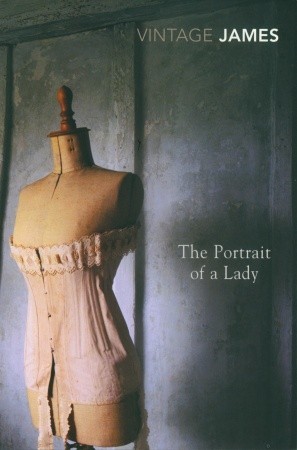Isabel Archer is a young American girl almost completely without family, who is determined to retain her freedom and independence. When she journeys to Europe with her wealthy aunt, she attracts the attention of several suitors, whom she has no qualms rejecting in order to see more of the world and the people who live in it. Thinking he is doing her a favour, her cousin arranges for Isabel to come into some money, to support her independent lifestyle. But when Isabel travels to Rome and meets Gilbert Osmond, she starts to question the decisions she has made, unaware of the true nature of what she is getting herself into.
I have to be honest at the start of this review and admit that I was expecting The Portrait of a Lady to be a conventional marriage plot type of book, albeit with a more feisty leading lady. So I was unprepared for what The Portrait of a Lady actually is - a convincingly realistic portrayal of life and all its miseries, full of suffering for the main characters. The first part of the novel is a marriage plot of a kind, but James takes the reader beyond that, and shows us the reality of a desperately unhappy marriage, and the consequences for Isabel once she has to live with the decisions she has made. This I wasn't expecting!
Isabel is a fascinating main character. At the start of the novel she is full of life, but also a bit full of herself and somewhat easy to dislike. She turns down suitors left right and centre, thinking that she is worth more than anyone else. She has romantic but unrealistic views of the world and is sometimes determined to be difficult. She's proud and stubborn, and this is partially what makes her choose Gilbert Osmond against the advice of everyone she trusts. The more they say that he's not right for her, the more that it seems he is only after her money, the more she is determined to marry him. And this pride works against her once she is married, preventing her from showing the world anything but a happy face, despite her true feelings.
As I was reading The Portrait of a Lady, I thought a lot about Isabel and whether her marriage was what we would now call abusive. Osmond actively seeks to separate her from her friends and family, expects to be able to tell her what to think, dictates her opinions and decides who she can see and when. As a reader, we see Isabel slowly become demoralised and stop fighting, a dramatic change considering her character at the beginning of the novel. Although this didn't exactly make for fun reading, I wasn't expecting to see marriage written about like this in the nineteenth century, and I found it to be very powerful. I admire James for writing such a realistic, gritty story with nuanced characters. By the end, you even feel sympathy towards one of the main agents of Isabel's misery.
The Portrait of a Lady is one of those books that I think I'll enjoying thinking about and analysing more than I enjoyed the actual experience of reading it. It's very long at 600+ pages, has a bit of a slow start and is dialogue heavy. James' writing is remarkably perceptive and the dialogue sharp, but at times it felt like he stayed too long with particular characters or in particular scenes, and I needed to push through in order to make progress with the book. However, I am very glad I read it and I think it's a book that will stay with me for a long time.
Source: Personal copy
First Published: 1881
Edition Read: Vintage, 2008
Score: 4 out of 5
The Classics Club: Book 25/72
My full list of classics (with linked reviews) can be found here.

This was the first Henry James novel I ever read and I fell in love with it...so beautifully sad. (And so beautifully written!) I know James isn't for everyone, but I'm definitely a fan. Have you read any of his other books?
ReplyDeleteI've read Turn of the Screw and Daisy Miller. Didn't really like Turn of the Screw, but Daisy Miller is my favourite of his so far, although I can see that Portrait is a 'better' book.
DeleteI didn't really like Turn of the Screw either; it's not his best book. But I like Daisy Miller a lot. I think The Wings of a Dove might be my favorite James novel, but I like so many of his books it's hard to choose one "best."
DeleteSounds interesting! I'm definitely going to give this one a go at some point, even though I am scared. Maybe James' text is not for me, but I need to read more from him to make such a decision.
ReplyDeleteJames has been a bit hit and miss for me; I didn't like Turn of the Screw but loved Daisy Miller. I don't think he will become one of my favourite authors, but I'm sure that I will like other books by him at some point.
DeleteI like that you mentioned how realistic this 'marriage' was to you, and how you believed in the character. I think it's crucial for readers to be able to believe in a situation, especially in classic books, because it makes us realize how relevant classics are today.
ReplyDeleteI'm always surprised by how relevant some classics are. I guess humans haven't changed that much!
DeleteI'm never exactly sure how I feel about James... I think it's kind of that I like his stories, but not his writing (like, at all) and so I'll read them but it won't exactly be a pleasant experience for me. I think I actually have The Portrait of a Lady, so presumably I'll be reading it in life, so it's good to know that it gives you a lot to think about!
ReplyDelete